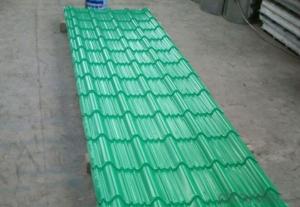Reinforcing steel bars, often referred to as rebar, are the backbone of modern construction. They provide the necessary tensile strength to concrete structures, making them robust and durable. But for those who are new to the world of construction or are simply curious about the details, understanding reinforcing steel sizes and weights can be a bit of a challenge. Fear not! We’re here to demystify this topic and make it as accessible as possible.
The Essence of Reinforcing Steel Bars
Rebar comes in various shapes and sizes, but the most common type is the straight, elongated bar with ridges or deformations along its length. These ridges increase the bond between the rebar and the concrete, ensuring a strong and stable structure. The material itself is typically made from carbon steel, which is chosen for its high tensile strength and resistance to deformation.
Unraveling the Sizes
When it comes to sizes, reinforcing steel bars are categorized by their diameter. Common diameters range from 6mm to 40mm, with the most frequently used sizes being 12mm, 16mm, 20mm, and 25mm. The size you choose will depend on the specific requirements of your project. Smaller diameters are suitable for residential construction, while larger diameters are often used in commercial and industrial applications.
Weighing the Weights
Understanding the weight of rebar is just as important as knowing its size. The weight of a rebar is determined by its diameter and length. A simple formula to calculate the weight per meter is:
\[ ext{Weight (kg/m)} = _x000C_rac{ ext{Diameter (mm)}^2}{10} \]
This formula will give you an approximate weight, which is helpful when planning the quantity of rebar needed for your project.
The Role of Reinforcing Steel in Construction
Reinforcing steel plays a critical role in construction. It is used in a variety of applications, including but not limited to:
– Foundations: To provide support and stability to the structure.
– Columns: To resist compressive forces.
– Beams: To withstand bending and tensile forces.
– Slabs: To distribute loads evenly across the surface.
– Walls: To resist lateral forces and provide additional support.
Choosing the Right Size and Weight
Selecting the appropriate size and weight of rebar is crucial for the structural integrity of your project. Here are a few tips to keep in mind:
– Consult the Blueprints: Always refer to the architectural plans and specifications for the required rebar sizes and weights.
– Consider the Load: The load that the structure will bear should dictate the size and weight of the rebar used.
– Think About the Environment: The environmental conditions, such as exposure to saltwater or extreme temperatures, can affect the choice of rebar.
– Don’t Compromise on Quality: Always opt for high-quality rebar to ensure the longevity and safety of your construction project.
The Human Touch
While rebar may seem like a cold, unfeeling material, it is the human touch that brings it to life. Engineers, architects, and construction workers all play a part in transforming these steel bars into magnificent structures that stand the test of time. It’s not just about the strength of the material, but also the skill and expertise of the people who use it.
The Future of Reinforcing Steel
As we look to the future, the demand for reinforcing steel is only set to increase. With the growth of urbanization and the need for sustainable construction practices, the role of rebar will continue to be vital. Innovations in material science may lead to the development of stronger, lighter, and more durable rebar, further enhancing the capabilities of construction projects.
Wrapping Up
In conclusion, reinforcing steel sizes and weights may seem like a daunting topic at first, but with a bit of understanding, it becomes much more manageable. Whether you’re a seasoned professional or just starting out, knowing the ins and outs of rebar can make all the difference in your construction endeavors. So, the next time you walk past a construction site, take a moment to appreciate the unsung hero of the project—the reinforcing steel bar.

